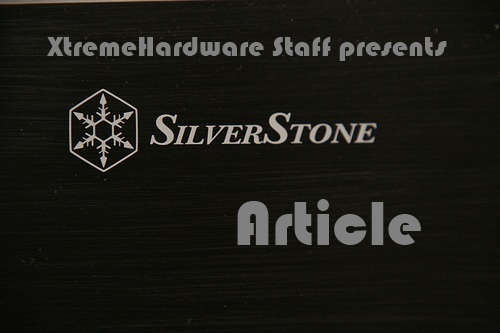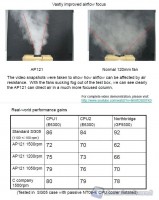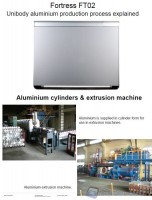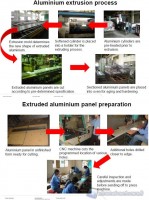 Today we inaugurate a series of articles about the famous SilverStone brand, starting with an analysis of its proprietary cooling solutions. Furthermore, we will present a series of cabinets each having different features, hence oriented to different user groups; we’ll also present during the analysis several interesting products, always of the same brand.
Today we inaugurate a series of articles about the famous SilverStone brand, starting with an analysis of its proprietary cooling solutions. Furthermore, we will present a series of cabinets each having different features, hence oriented to different user groups; we’ll also present during the analysis several interesting products, always of the same brand.
[VERSIONE ITALIANA]
Pagina 4 di 17
Why SilverStone? Some useful Interviews
We report some interesting interviews to SilverStone, made in these years. We thank SilverStone for the material used in this chapter.
Company History
SilverStone Technology was founded in May of 2003 by a group of engineers that previously worked on many aluminum cases for another company, so they were able to release in the market very quickly new design and cases as a result. Seeing that there were many areas in which they could improve HTPCs, they focused heavily on making cases for the living room. Although they’re first major breakthrough in terms of major award came from a tower case (TJ03), it was however HTPC cases that they’re more known for in Europe.
Over the years they made some great achievements, like bringing new HTPC features to the mainstream such as integrated VFD, multimedia remote, upside-down motherboard layout, reverse, PSU mounting, hotkeys, tuning knobs, touchscreen, etc… For those not familiar with HTPCs, it will be quite shocking to see the SilverStone case lineup for the first time because of the variety that is present in this category.
They also have several industry firsts in case design such as swivel cut front panel (TJ02, February 2004), first retail SFF case designed to fit Micro-ATX motherboard and ATX PSU (SG01, March 2005), first unibody designed case (TJ07, October 2005), first HTPC case to have Western Digital RaptorX window (CW01-WD, March 2006), first SFF with dual 120mm fans (SG03, January 2007), and first HTPC with 7” LCD supporting 1080P (CW03, June 2007), etc…
We’ll report directly such interviews.
Ventilation, solutions and concepts
We prefer to use fans that can still be used to fit the width of the case, so you don’t use fans to go larger than 20 cm in diameter. Even if you put an even bigger fan on the side panel, to help cooling the graphics card, it won’t always be an improvement, in general terms. A well-designed case should not rely on ventilation, right on the large side panel, with the aim of good cooling performance. We have shown that this is true especially with the TJ10, which is officially certified for use with NVIDIA 3-way SLI. Many of our customers prefer to use their own fans so we don’t always include all the fans necessary within our cabinets. Even if we were to offer models of fans that can be adjusted in terms of speed, even in this case they may be dissatisfied with the quality of the included fans (for example, they may need a higher top speed or a certain color, or even LED ). The fans are now including a 3-pin connector, so that the user can connect them to the motherboard, which now offers many voltage settings. The speeds are usually aimed at maintaining a low noise level, but without sacrificing cooling performance provided by the cabinet. Undoubtedly, the ‘’PWM’’ factoris a nice feature to have in a fan, however, we believe that there are better solutions. We prefer to control the fan speed, based on ambient temperatures, this is what we used for our solutions in the series "SUSCOOL". This element can effectively change much more than what is possible with a PWM controller. It 'also pretty annoying to hear a fan constantly speeding up and down due to the sudden change of temperature ! If an heatsink is large and passive, but is not installed into a good cabinet, it doesen’t work well. This is why SilverStone publishes and include all the necessary information to users, to specify exactly how our heatsink are able to work with a cabinet model, to obtain good performance partially or totally passive.
Liquid, heat dissipation and noise
We also think that the liquid solutions are a great way to achieve high performance with minimal noise. Although we do not sell more than a watercooling kit, and even if there are air-cooling solutions that can sometimes match these solutions, liquid systems are still supported in our cabinets. If you notice many of our tower cases, especially the Temjin series, have always been favourites between the users, about watercooling cabinet solutions. We are very proud that our TJ07, which was published in 2005, is still a favorite of cases for watercooling enthusiasts today 's world. We designed our cases with the boxed retail heatsink Intel or AMD, as its primary objective. The design of a case that works well with the boxed cooler, however, does not mean you need to have a side duct. Certainly we can design special CPU cooler, to work better in some of our cases, but not design a case by imposing a particular form of heat sink. We haven’t considered the addition of heatsinks to one of our cases in the bundle, and we don’t think that is a topic that we will face soon. Regarding the killing of the noise, the best strategy to reduce noise is to design a case with the best possible cooling performance. If the layout of the case helps to keep the airflow smooth and efficient, then you can use slower fans for cooling. The choice of a good fan, vibration-free results also permit a more silent environment.
Vibrations, build quality and materials
To reduce vibrations, a case should have a greater structural rigidity as a possible starting point. We test the prototypes of cases with all the latest components on the market to simulate the real conditions of use. Even if we make the measurement of environmental noise, as part of our test, we found that often subjective listening usually works just as well. Most of the frames of our cases have been designed entirely by our team of engineers. Among the 45 models we have now, there are only 10 frames, which are based on standard mold designs that only then would then modified according to our specific needs for cooling and mounting. For example, however, on the heatsinks, we have contracts with our partners for the direct production of heatsinks and fans, we tend also to do a mix between our internal design and instead a possible adoption of new innovative competition. In a small scale we are also OEM distributors, despite the fact that our reputation and our brand is widely known for the retail market. Thanks to our partner network we’re able to have a wild distribution of products worldwide. With regard to the construction itself, aluminum is great for the construction of beautiful cases and the overall weight savings. We're very good with regard to the processing of aluminum into elegant shapes, which helps to create projects that might not otherwise be created even if we used the steel as the base frame. There are pros and cons, these are obviously the cost, and its tendency to vibrate more of steel. Although we can not really do anything for the cost, we can reduce vibration by designing cases with thicker, or more generally reinforced. We think that a design that allows use of the case without the aid of dedicated hardware, is a great factor, in fact we use many models that have these features. However, there are certain types of customers who prefer to use screws to also have those types of cases. In general we have no particular preference, but we are seeing the trend of the market and seems to be moving towards more design without screws.
For example, this is the line of production of the famous Silverstone FT-02:
Power supplies, voltage and stability
At this moment it is true that as our PSU 1200W models are more powerful than a good part of high-end systems they really need in terms of required power, but we think there are still some advantages:
- Most PSUs reach their maximum efficiency at medium load conditions, to use a more powerful PSU in 'high-end performance of the system, which will result in greater energy efficiency.
- For overclockers, having a power supply with extra reserves can ensure that even in extreme conditions, the power supply can still provide stable output power.
- The demand for more computing power and graphics are still growing and we are seeing more games and software to exploit multi-core CPU / GPU, therefore. Knowing this, we expect high-end systems continue to increase the threshold required by the power supply, which must necessarily be high-power, and will not stop for some time in the near future.
Regarding the number of channels, while the tendency was to abandon the single-rail for the multi-rail, it seems that we are now seeing the reverse trend. But really what are the needs and characteristics of a single-rail? The modern PC, now based in large measure from +12 V with literally thousands of combinations of components, if one takes into account the 'overclocking, there are many possibilities that we can go short on energy, for a multi-rail power supply in one of its channels, because of OCP (Over Current Protection). Given the high power of the PSU, a single +12 V rail is usually preferable because it will make the most of the PSU. We made this very early compared to most of our competitors, and so we have long established a full model line of PSUs such as OP and the Decathlon series, which has a single +12 V rail to meet the most demanding users feeding, overclockers and also all our PSUs have the SCP (short circuit protection) to avoid the overhead of a cable through a short circuit, then the mono-rail is not an issue with regard to a possible overload.
Some examples of SilverStone innovations
In the following video we begin to understand why Silverstone is one of the most innovative brands in the industry, which will be analyzed in the CP05 Auxiliary adapter Kublai KL02 cases, hot-swappable. It is practical and quick to use and we highly recommend it because it can be easily be integrated in the KL-02 without the need of cumbersome additional hot-swap modules.
http://www.youtube.com/watch?v=NoNiEMPnSEk&list=UUig-yfqTR5tHwdxuxpmPK7w&feature=plcp
Another interesting product is the mouse named SilverStone RAVEN RVM01, notable also for tracking capabilities in non-conventional areas:
http://www.youtube.com/watch?v=IcyO4Ws3sq8&list=UUig-yfqTR5tHwdxuxpmPK7w&feature=plcp
The following video shows you why Silverstone is also very popular in the PSU sector: ladies and gentlemen the Zeus 1200W model! It is worth noting the degree of automation achieved by this brand:
http://www.youtube.com/watch?v=qLNUwcz-Bt4&list=UUig-yfqTR5tHwdxuxpmPK7w&feature=plcp
 Today we inaugurate a series of articles about the famous SilverStone brand, starting with an analysis of its proprietary cooling solutions. Furthermore, we will present a series of cabinets each having different features, hence oriented to different user groups; we’ll also present during the analysis several interesting products, always of the same brand.
Today we inaugurate a series of articles about the famous SilverStone brand, starting with an analysis of its proprietary cooling solutions. Furthermore, we will present a series of cabinets each having different features, hence oriented to different user groups; we’ll also present during the analysis several interesting products, always of the same brand.














